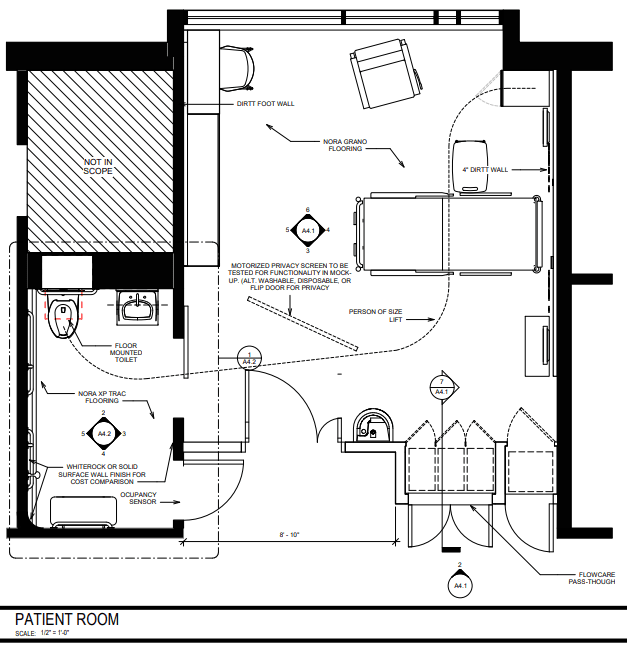According to the CDC, one in 31 hospital patients contracts at least one healthcare-associated infection (HAI)[1]. A few of the top instigating factors of these infections include the absence of design features for room cleaning facilitation, equipment cleaning and management, waste management, hand hygiene accommodation, and splash and touch contamination. The Healthcare Associated Infections Organization (HAIO), founded by Richard Barnett of Colliers International, is a collaborative nonprofit with the mission to minimize the risk of the spread of healthcare-associated infections through the use of architectural design and construction. Bringing together the minds of architects, engineers, general contractors and healthcare professionals in the Greater Boston area has launched the collaborative efforts of these experts to envision a new reality— an in-patient hospital room that could minimize the development of hospital-born infections. The prototype they are developing, aptly named the “Room of the Future”, will revolutionize the healthcare industry forever.
So, if this Room of the Future were to be built exactly as these great minds have planned it, what would it look like? The ideal in-patient room is not only important for the future safety of hospital patients, families of patients and hospital staff, but it will also inform and set the standard for new elements in hospital design. For the past two years, Mass General Brigham, Colliers, and top healthcare architects, engineers and Wise Construction have joined forces to design, engineer and preplan the construction for a room that is as hands-free, contamination-free, and as cleanable as possible. When interviewing Wise’s VP of Healthcare, the following represents what they’ve established to be the key criteria for an infection-controlled space:
- Flowcare Cabinetry with thermofoil fronts. This is a pass-through method which allows the distribution of objects from the corridor to the patient’s room without hand-to-hand contact.
- EOS cu, a copper infused technology that creates preventative solutions to the spread of bacteria. Elements such as bathroom grab bars, door handles, vanity, sink, and solid surface counters are some of the few to be made from EOS cu.
- Solid FRP Barn Door by AD Systems for the patient’s bathroom that is easily cleanable with hands-free, automatic access operations.
- Whiterock system in shower room. This is a great hygienic alternative to many in-patient shower rooms. It is also easily cleanable, impact-resistant and grout-free.
- Power operated, hands-free patient room entry door with Electrochromic glass, a type of smart glass for doors and windows.
- Patient lift from bed into bathroom, to assist hospital staff.
- Two-door approach into bathrooms. Door from the corridor for access by EVS to clean without entering the patient’s room.
- Motorized window shades with hands-free operations.
- Privacy screen that is motorized at the patient bed with hands-free operations.
- Prefabbed DIRTT Head and Foot Wall System with thermofoil finish and built-in monitors and TV.
- Safe Health Solutions hand wash sink with Eos vanity and hardware to prevent splash contamination and spread of bacteria.
- Hands-free faucet, Flushometer, soap and paper towel dispensers.
- Aiva, a reimagined voice activation system for all patients needs including HVAC, lighting, shades, TV, and communication with hospital staff.
Construction of the Room of the Future has not yet begun as ideas are still being deliberated by this great team of experts. They continue to meet and discuss next steps and more importantly, to gain awareness for the Room of the Future. “Many of the key features we’re envisioning will be applied elsewhere in future hospital design and construction,” says our VP of Healthcare. “Elements such as voice activation and the use of antimicrobial agents, like copper, will become commonplace in hospitals dealing with HAIs.” While the intent of Room of the Future is to control the spread of hospital-born infections, it will also have a widespread impact on future hospital design and construction standards.
[1] Centers for Disease Control and Prevention, Healthcare-associated Infections (HAI), (October 5, 2018) https://www.cdc.gov/hai/data/index.html

